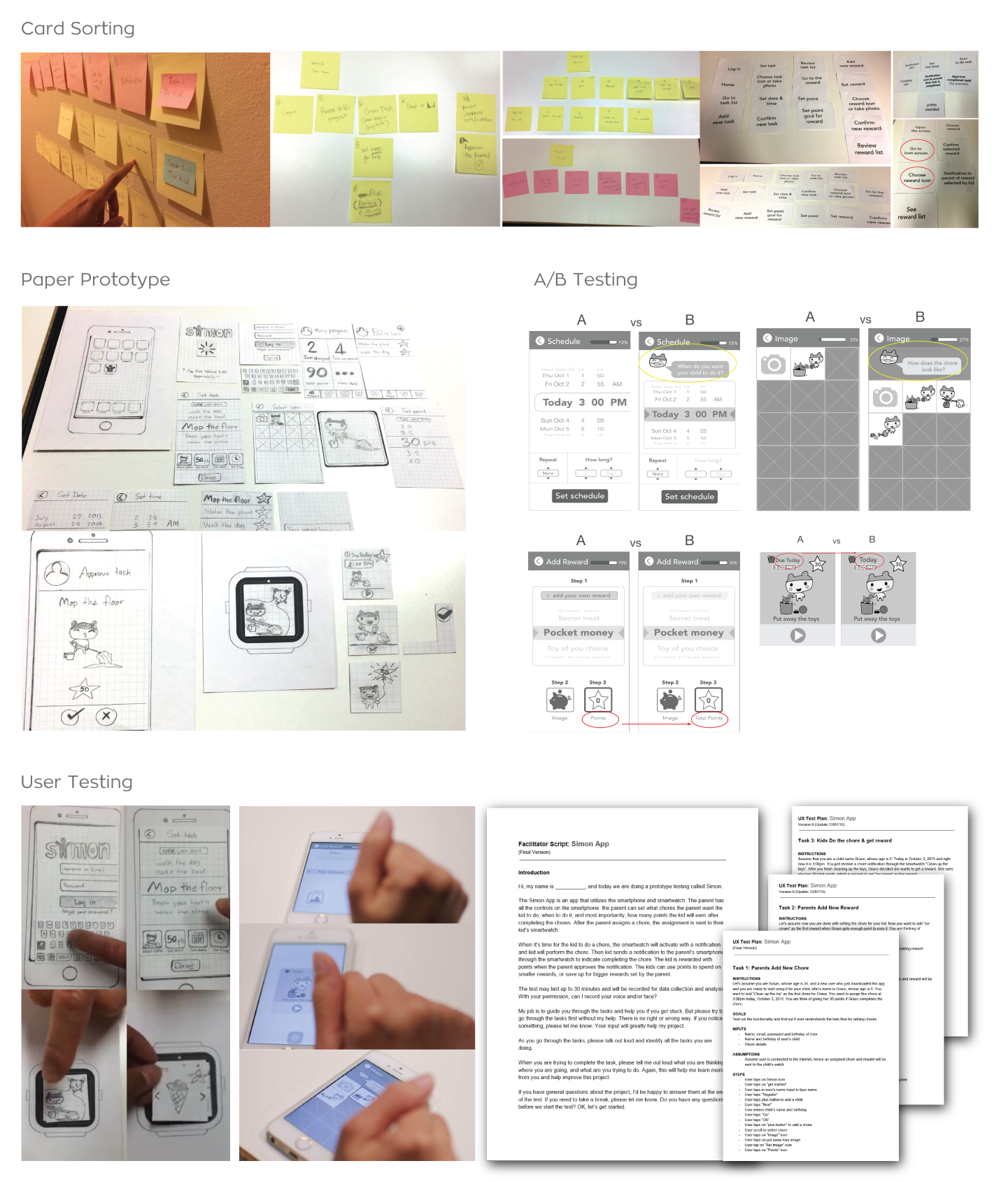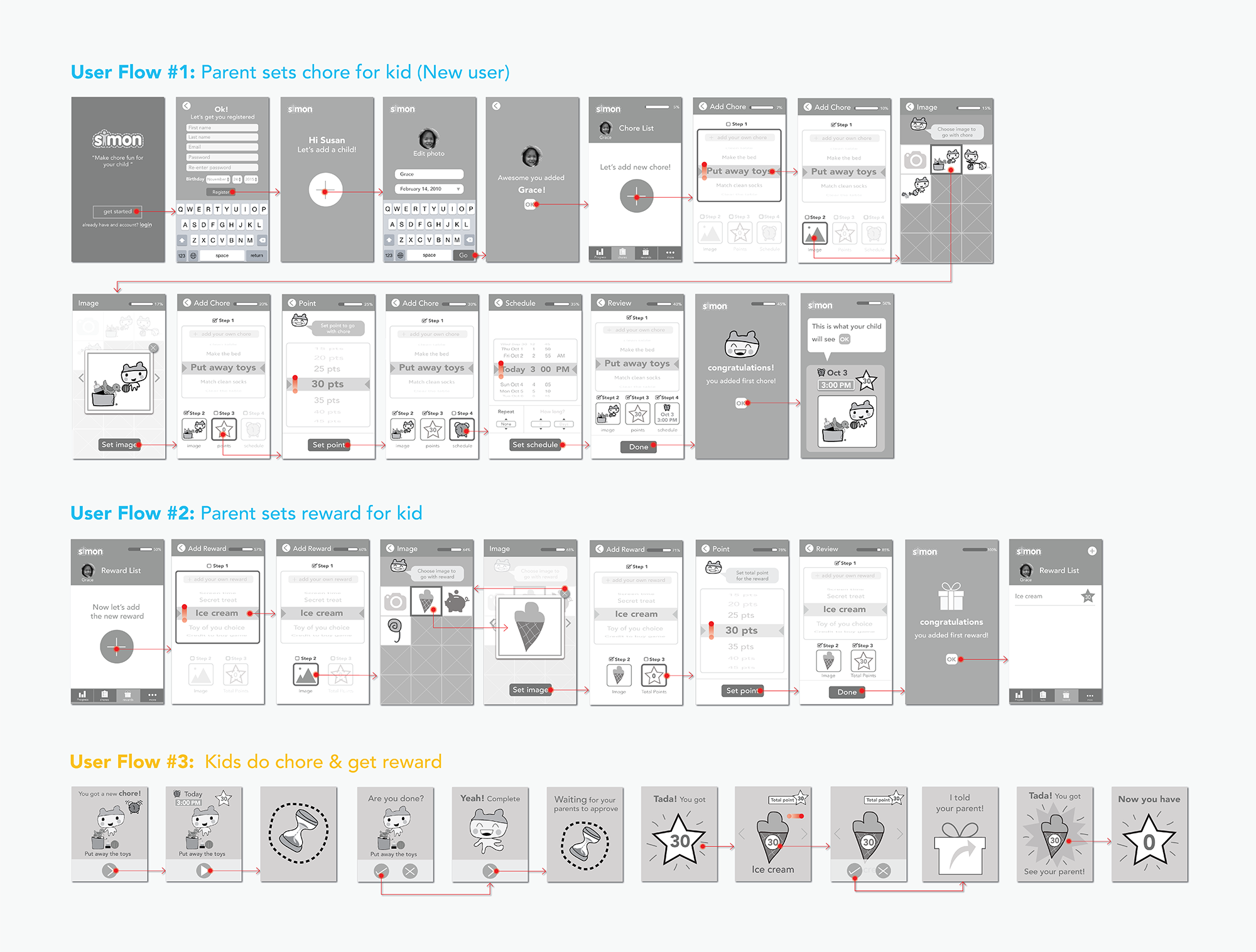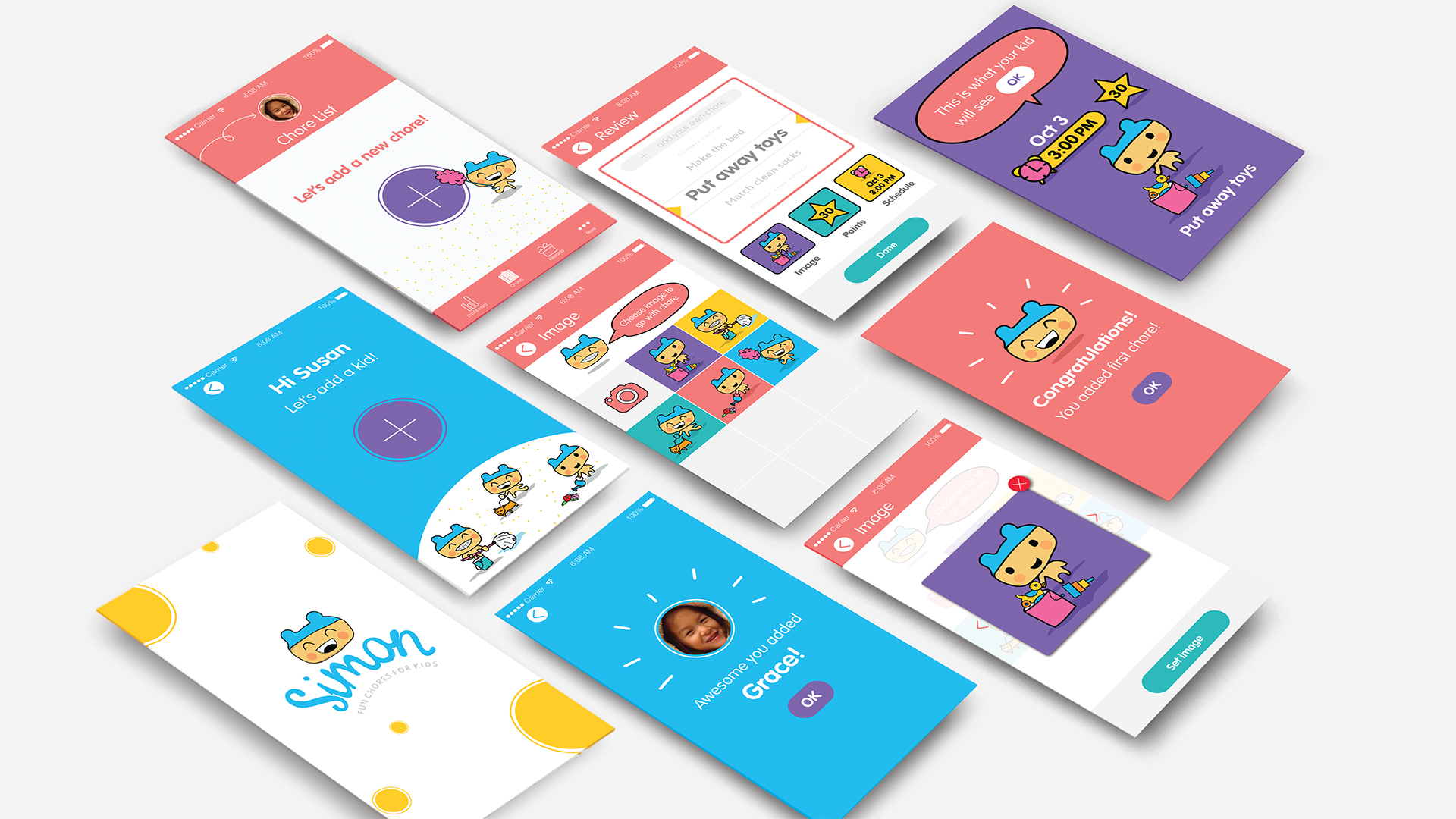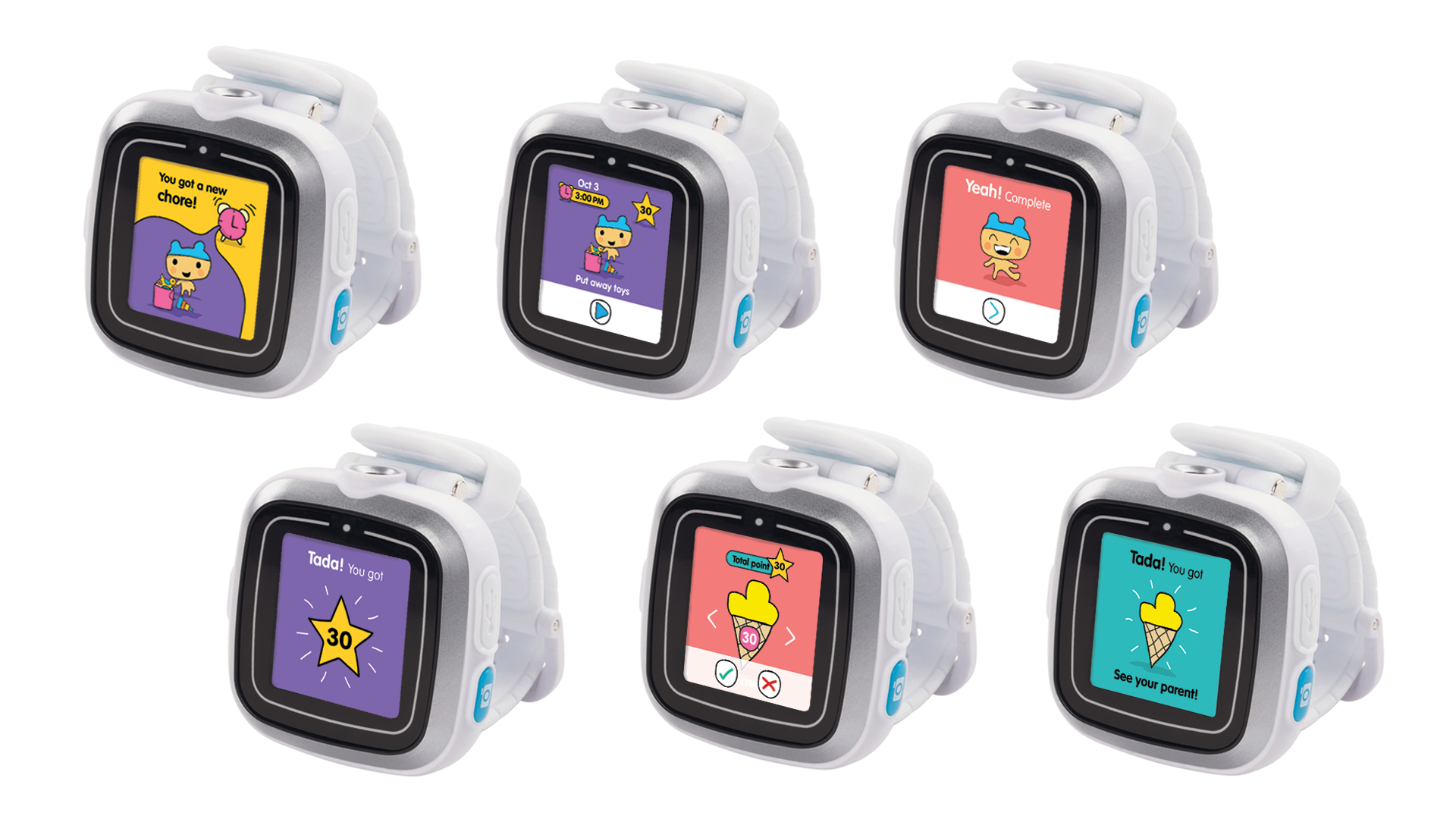
Simon
UX/UI Graduate Thesis
Project Description
The Simon App is an innovative concept that utilizes the smartphone and smartwatch. The parent has all the controls on the smartphone. The parent can set what chores the parent wants the kid to do, when to do them, and, most importantly, how many points the kid will earn after completing those chores. After the parent assigns a chore, the assignment is sent to their kid’s smartwatch.
When it’s time for the kid to do a chore, the smartwatch will activate with a notification and the kid will perform the chore. Then, the kid sends a notification to the parent’s smartphone through the smartwatch to indicate that the chore is complete. The kid is rewarded with points when the parent approves the notification. The kid can then use those points to spend on smaller rewards, or save up for bigger rewards set by the parent.
Date Completed: August 2016
Concept Video
Problem
According to my research, many parents believe teaching kids responsibility at an early age is very important. It will help give kids the opportunity to act independently and be accountable for their own actions. One way to teach responsibility is by having kids do chores. However, many parents experience problems getting kids to do chores because their kids believe chores are boring. Moreover, even if parents successfully get their kids to do chores, they have trouble getting their kids to do them on a regular basis. How can parents get their kids excited about doing chores?
Solution

My solution is to create an app on the smartphone for the parents and on the smartwatch for the kids. The parent will be able to create and customize a chore with date, time, and points from their smartphone. When it's time for the kid to do a chore, the notification will be sent to the kid's smartwatch. In addition, the app will have an innovative reward system that allows the parents to set rewards with target points so kids have the option to exchange points they have for the rewards, or save them for a bigger reward. This will help keep kids motivated to do more chore.
Target Audiences
The first important step is to find the target audience for my app. I did this with surveys to narrow the age range for kids and parents. Then, I searched for people who fit this age range and interviewed them to validate my research findings.

Interviews
The interviews I've conducted gave me valuable information and different perspectives, which were very helpful in refining my research. During the interviews, I discovered that parents have concerns with privacy and security for their kids using this app.

Persona
The validation of my target audiences and the information from the interviews allowed me to construct my personas. This helped me to understand the user’s needs for the app. I was able to find a mother-daughter pair that fit my persona. They eventually became one of my user-testers.

Experience Map
In order to construct the user’s task flows, I need to understand what the user is thinking about and how the user feel if the user is to use the app. This will identify where the user feel the most comfortable in performing a task.

Information Architecture
For the development of the prototype, I focused on the core structure of the information architecture (IA structures that are clearly visible). If I'm given the opportunity in time, or the next phase after my thesis, I can expand to include other components (the transparent structures).

Prototype/User Testing
With the information from the experience map, and the general outline of the user’s tasks, I applied some UX techniques such as card sorting, to refine the user task flows. Then I sketched out the paper prototype to simulate user interactions and do A/B testing to refine my Lo-Fi wireframe before I moved on to develop an interactive prototype for actual user testing

User Testing Video
Task Flows and Wireframes

Logo Design

Character Design

UI Design



Scenario Storyboarding
To further expand on the concept of this app, I created a scenario storyboard which was further developed into a concept video.
